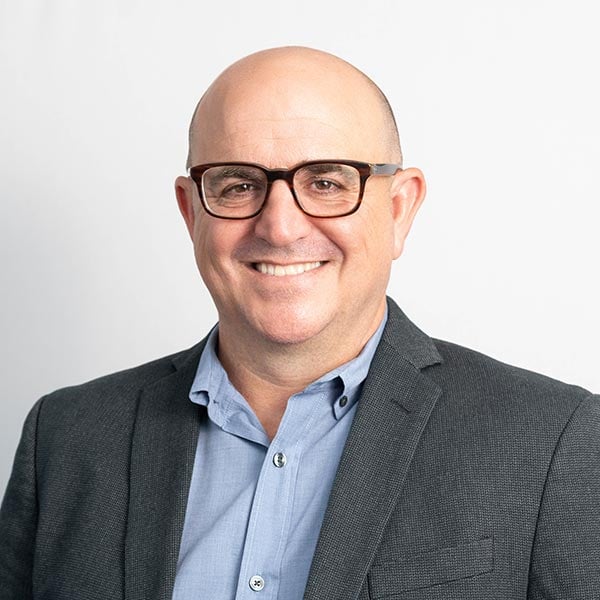Oxycodone is an opioid prescribed for severe pain relief. It is a semi-synthetic opiate first created in 1916 from a chemical found in poppy plants and related to other narcotic drugs, such as morphine and heroin.
Prescription opioids treat severe pain and are often prescribed following surgery, traumatic injury, or terminal health conditions like cancer. In recent years, there has been a dramatic increase in the use of prescription opioids for treating chronic pain, such as back pain, despite serious risks.
191 million opioid prescriptions were dispensed to Americans in 2017 across the United States.
According to the American Society of Addiction Medicine, of the 20.5 million American adults suffering from a substance abuse disorder in 2015, 2 million suffered from a substance abuse disorder that directly involved a prescription medication like Oxycodone.
The Most Common Prescription Opioid Deaths Include:
- Methadone.
- Oxycodone.
- Hydrocodone.
Oxycodone, like all other narcotic painkillers, can cause addiction and dangerous, life-threatening effects when abused.
If you or someone you love has a substance use disorder, Guardian Recovery is available to help. We are dedicated to providing the most comprehensive and individualized medically monitored detox program. To learn more about our programs, contact us today.
Start Healing Today!
Choose recovery and take control of your life, it’s the path to a brighter future filled with health, happiness, and fulfillment.
What Is Oxycodone?
Oxycodone is a semi-synthetic opiate, also referred to as a narcotic. In addition to ingredients from the opium poppy plant, it is partly manufactured in a laboratory. It is prescribed to individuals with severe pain or a terminal diagnosis, such as cancer.
Oxycodone is responsible for the opioid epidemic and is one of the most commonly abused prescription drugs. Oxycodone is also marketed as OxyContin and can be used illicitly orally or intravenously.
A person who uses oxycodone other than what is prescribed for relieving pain will feel a rush of euphoria and increased relaxation which attributes to the likelihood of abuse. Drugs similar to oxycodone include opium, codeine, heroin, methadone, hydrocodone, fentanyl, and morphine.
Risk Factors for Oxycodone Abuse & Addiction
Anyone who uses opioids is at risk of developing an addiction. Although personal history and the length of time you use opioids play a role, it’s impossible to predict who’s susceptible to dependence and abuse of these drugs.
A person is more at risk of addiction when they use a drug different from what is being prescribed and when a higher dose is used. If oxycodone is crushed and snorted or injected for use, this also will contribute to the likelihood of addiction. In addition to addiction, this also increases the danger of overdose and death.
The length of time you use prescribed opioids also increases the risk of addiction. Researchers have found that taking opioid medications over a few days increases your risk of long-term use.
Known Risk Factors of Opioid Addiction:
- Poverty.
- Unemployment.
- Family history of substance abuse.
- Young age.
- History of criminal activity or legal problems.
- Regular contact with high-risk people or environments.
- Risk-taking or thrill-seeking behavior.
- Heavy tobacco use.
- History of severe depression or anxiety.
- Stressful circumstances.
- Prior drug or alcohol rehabilitation.
In addition, women are specifically vulnerable to opioid addiction. Women are more likely than men to have chronic pain. Additionally, women are more likely to be prescribed opioid medications, given higher doses, and use opioids for extended periods.
Is Oxycodone or Opioid Addiction Hereditary?
It is unclear whether opioid addiction is influenced by heredity. However, many individuals with opioid addiction also have a family history of addiction to opioids or other substances. People with family members with addiction appear to have a higher risk of addiction. This increased risk is likely due in part to shared genetic factors. Still, it may also be related to the environment, lifestyle, and other influences that members of a family share.
How Addictive Is Oxycodone to Users?
Oxycodone is one of the most abused prescription drugs in the country. 1.9 million people in the United States abuse opioid painkillers, and about 46 deaths occur every day in the U.S., according to the American Society of Addiction Medicine (ASAM). Furthermore, people who abuse prescription painkillers are at risk for heroin use due to the similar effects heroin and oxycodone have. According to one study, people with prescription opioid addiction were 19 times more likely to start abusing heroin in the year before the study. This may be because heroin is more easily accessible and costs less than opioid painkillers.
How Does Oxycodone Addiction Develop?
An oxycodone addiction develops if a person is prescribed these pills for more than a few days. Once a person begins to take these drugs for more than 5 days, it can be expected that they may be using opioids for a year or longer.
Additionally, addiction begins if a person uses the drug outside of how it was prescribed. For example, if a person starts to snort or inject oxycodone instead of taking it orally, this can lead to an addiction.
Visible Signs Someone May Be Addicted to Oxycodone
You may not be able to notice the signs of an opioid use disorder right away. Over time, there may be some signals that the person needs help.
Signs of an Opioid Addiction:
- Drowsiness.
- Changes in sleep habits.
- Weight loss.
- Frequent flu-like symptoms.
- Decreased libido.
- Lack of hygiene.
- Changes in exercise habits.
- Isolation from family members or friends.
- Stealing from family members, friends, or businesses.
- New financial difficulties.
Even when it may seem clear that a person you love has a substance use disorder, they may deny that the problem is severe and resist efforts to help for a long time. When ready and willing to start a recovery process, it is essential for your loved one to have access to resources and to start treatment as quickly as possible.
Symptoms & Side Effects of Oxycodone Addiction
Opioid use disorder is a chronic disease that can affect you physically, mentally, and behaviorally. A medical or mental health professional can assess the following symptoms to make a formal opioid use disorder diagnosis.
If you’ve experienced two or more of these symptoms in the past 12 months, you may consider seeking help for opioid use disorder.
Signs You May Need Addiction Treatment:
- You have developed a tolerance.
- You have intense cravings to use oxycodone.
- You experience withdrawal symptoms when oxycodone use is stopped.
- You have trouble completing essential tasks at home, school, or work.
- You can’t stop using oxycodone regardless of the problems it is creating.
- You can’t stop using oxycodone even after it has worsened issues in relationships.
- You’ve quit essential activities because it gets in the way of oxycodone use.
- You’re spending a lot of time obtaining, using, or managing the effects of oxycodone.
- You’re using significant amounts or taking oxycodone for longer than initially planned.
- You’re using oxycodone in potentially dangerous situations.
- You’re trying to cut down or stop using oxycodone without success.
Complimentary Insurance Check
Find Out Today!
"*" indicates required fields
Can Oxycodone Addiction Cause Permanent Physical or Psychological Damage?
Long-term damage and permanent effects caused by opioid addiction are primarily due to hypoxia. Hypoxia is when the brain does not get enough oxygen. Hypoxia can have short and long-term effects, including coma, permanent brain damage, or death. It is unclear whether the long-term effects of opioid use can be reversed.
Opioids Affect Brain & Nervous System:
- Opioids depress breathing and heart rate.
- Opioids reinforce drug-taking behavior by altering activity in the limbic system, which impacts emotions.
- Opioids block pain messages transmitted through the spinal cord from the body.
Research has found that people abusing opioids often have a comorbidity of depression. Left untreated, depressive symptoms can make a recovery even more difficult.
The relationship between opioid abuse and depression is strongly correlated. Opioid use has been linked to higher rates of depression, anxiety, and bipolar disorders.
But some research suggests that simply using prescription opioids can put one at higher risk for depression. Researchers found that 10% of over 100,000 patients prescribed opioids developed depression after using the medications for over a month. These patients were taking the drug for ailments such as back pain, headaches, and arthritis and had not been diagnosed with depression before treatment.
What to Do if Someone Overdoses on Oxycodone
The first thing you or your loved one can do to stay safe when using opioids is to be aware of potential overdose signs.
Common Signs of Opioid Overdose:
- Shallow and slowed breathing.
- Extreme fatigue.
- Vomiting.
- Small pupils in their eyes.
- Become unconsciousness.
A drug overdose is a medical emergency. If you or someone you know is experiencing symptoms of an overdose, call 911. You may also call poison control at 1-800-222-1222.
Another preventative step is having an overdose bag with the medication naloxone.
Naloxone is a medicine that is an antidote to opioid drugs. Opioids can slow or stop a person’s breathing, leading to death. Naloxone helps a person who has opioids in their body wake up and keep breathing. The brand name Narcan is also known as naloxone.
Naloxone reverses an opioid overdose. Naloxone works by blocking the effects of opiates on the brain and restoring breathing. Naloxone will only work if a person has opiates in their system. It will not work with other drugs. A person cannot get “high” from using naloxone, which is safe for practically anyone.
If you are taking prescription opioids, you can ask your healthcare provider or pharmacist for a naloxone prescription. Health insurance might cover the cost of naloxone. If you want naloxone on hand for someone else, you can ask your pharmacist for a prescription.
Oxycodone Use, Addiction, & Overdose Statistics
In 2020, 44 people died daily from overdoses involving prescription opioids, totaling more than 16,000 deaths. Prescription opioids were involved in nearly 24% of all opioid overdose deaths in 2020, a 16% increase in prescription opioid-involved deaths from 2019 to 2020.
The opioid prescribing rate in the United States peaked and leveled off from 2010-2012 and has been declining since 2012.
There was a more than 19% reduction in the annual prescribing rate from 2006 to 2017. The declines in opioid prescribing rates suggest that healthcare providers have become more mindful of their opioid prescribing practices.
In 2017, however, there were still almost 58 opioid prescriptions written for every 100 Americans.
- Over 17% of Americans had at least one opioid prescription filled, with an average of 3.4 opioid medications dispensed per patient.
- The average number of days per prescription continues to increase, with an average of 18 days in 2017.
There is wide variability at the county level in the number of opioids received per resident.
Counties With High Opioid Prescription Characteristics:
- Smaller cities.
- A higher percentage of white residents.
- A higher number of dentists and primary care physicians per capita.
- More people are uninsured or unemployed.
- More residents have diabetes, arthritis, or a disability.
The Cost of Opioid & Prescription Drug Addiction on Families & Society
The effects of the opioid crisis are cumulative and costly for our country. An estimated $504 billion was spent in 2015 on individuals impacted by opioid use. This negatively impacts families, workplaces, the health care system, states, and communities.
Potential Solutions to Oxycodone Abuse & Addiction
Solutions to minimize oxycodone abuse and addiction involve a variety of approaches to prevent and resolve the current factors responsible for the opioid epidemic we currently face in the United States. The primary focus of prevention includes harm reduction strategies, increased access to treatment, and education and prevention efforts.
Harm Reduction Strategies
Harm reduction is an approach that focuses on building connections with people who use drugs.
The harm reduction goals are to prevent overdose and infectious disease transmission, improve people’s physical, mental, and social well-being, and offer various substance use treatment options.
Harm reduction is essential to the comprehensive approach to addressing substance use disorders through prevention, treatment, and recovery, where individuals feel empowered to seek treatment.
Harm reduction organizations incorporate a spectrum of strategies that meet people “where they are” on their terms and may serve as a pathway to additional prevention, treatment, and recovery services.
Increased Access to Treatment
SAMHSA is proposing to expand access to treatment for opioid use disorders.
The proposal would update the federal regulations that oversee opioid treatment standards. Specifically, the proposed rule change would allow individuals to access treatment by enabling take-home doses of methadone and access telehealth to initiate recovery efforts.
Changes would make permanent medication flexibilities and update standards for opioid treatment programs, increasing access and availability for many individuals currently facing an opioid use disorder.
Education & Prevention Efforts
The US Department of Health and Human Services has the following programs to increase education and prevention efforts to combat the opioid crisis.
HHS Education & Prevention Programs:
- National Prevention Week
- It Only Takes A Little To Lose A Lot
- Opioid Epidemic Practical Toolkit
- How Can Prescription Drug Misuse Be Prevented?
- Prescription Drug Monitoring Programs
Treatment for Oxycodone & Opioid Addiction
At Guardian Recovery, we understand how difficult Oxycodone withdrawal can be. Withdrawal symptoms are often so severe that those struggling with Oxycodone addiction return to using within 24 hours.
The key to overcoming this obstacle is a medically supervised detox where withdrawal symptoms can be identified and treated immediately. Guardian Recovery provides 24-hour medical supervision and comfort care for detox clients. Our medical and client support team’s goal is to make sure all clients have a safe and comfortable detox so they can begin the next phase of their recovery journey.
Guardian Recovery Oxycodone Treatment Includes:
- Medically Assisted Detox.
- Dual Diagnosis Programs.
- Inpatient addiction treatment programs.
- Partial Hospitalization Programs.
- Intensive Outpatient Programs.
Our Locations
Our Facilities & Teams Transform Lives
Changing lives by providing comprehensive support and rehabilitation, empowering individuals to overcome addiction and regain control of their health and well-being.
Contact Us to Learn More
At Guardian Recovery, we remain dedicated to providing our clients with a comprehensive program of oxycodone detox that focuses on much more than physical stabilization. In addition to emphasizing physical recovery, we tackle mental, emotional, and spiritual well-being. While prioritizing a safe and pain-free cocaine withdrawal, we offer individual, group, and family therapy sessions, case management services, relapse prevention training, and aftercare planning.
Contact us today if you or your loved one is ready to begin an entirely new way of life and commit to long-term recovery. As soon as you call, we start developing a plan of action that begins with an initial pre-assessment. This assessment helps us determine the most appropriate level of care for each unique case. We identify potential coverage options if our medically monitored detox program is a good fit. We work closely with most major regional and national insurance providers. Contact us today for a free, no-obligation insurance benefit check.
SELF-ASSESSMENT:
Do I have an Addiction issue?
Disclaimer: Does not guarantee specific treatment outcomes, as individual results may vary. Our services are not a substitute for professional medical advice or diagnosis; please consult a qualified healthcare provider for such matters.
- https://www.cdc.gov/opioids/basics/prescribed.html
- https://www.asam.org/docs/default-source/advocacy/opioid-addiction-disease-facts-figures.pdf
- https://www.dea.gov/sites/default/files/2020-06/Oxycodone-2020_0.pdf
- https://www.mayoclinic.org/diseases-conditions/prescription-drug-abuse/in-depth/how-opioid-addiction-occurs/art-20360372
- https://www.hopkinsmedicine.org/health/conditions-and-diseases/opioid-use-disorder
- https://nida.nih.gov/publications/drugfacts/prescription-opioids
- https://publichealth.jhu.edu/2011/martins-opioids
- https://pubmed.ncbi.nlm.nih.gov/21999943/
- https://www.drugabuse.gov/publications/drugfacts/naloxone
- https://www.cdc.gov/drugoverdose/deaths/prescription/maps.html
- https://www.cdc.gov/drugoverdose/deaths/prescription/practices.html
- https://www.ncbi.nlm.nih.gov/books/NBK538436/
- https://www.samhsa.gov/find-help/harm-reduction
- https://www.hhs.gov/opioids/prevention/prevention-programs-tools/index.html









